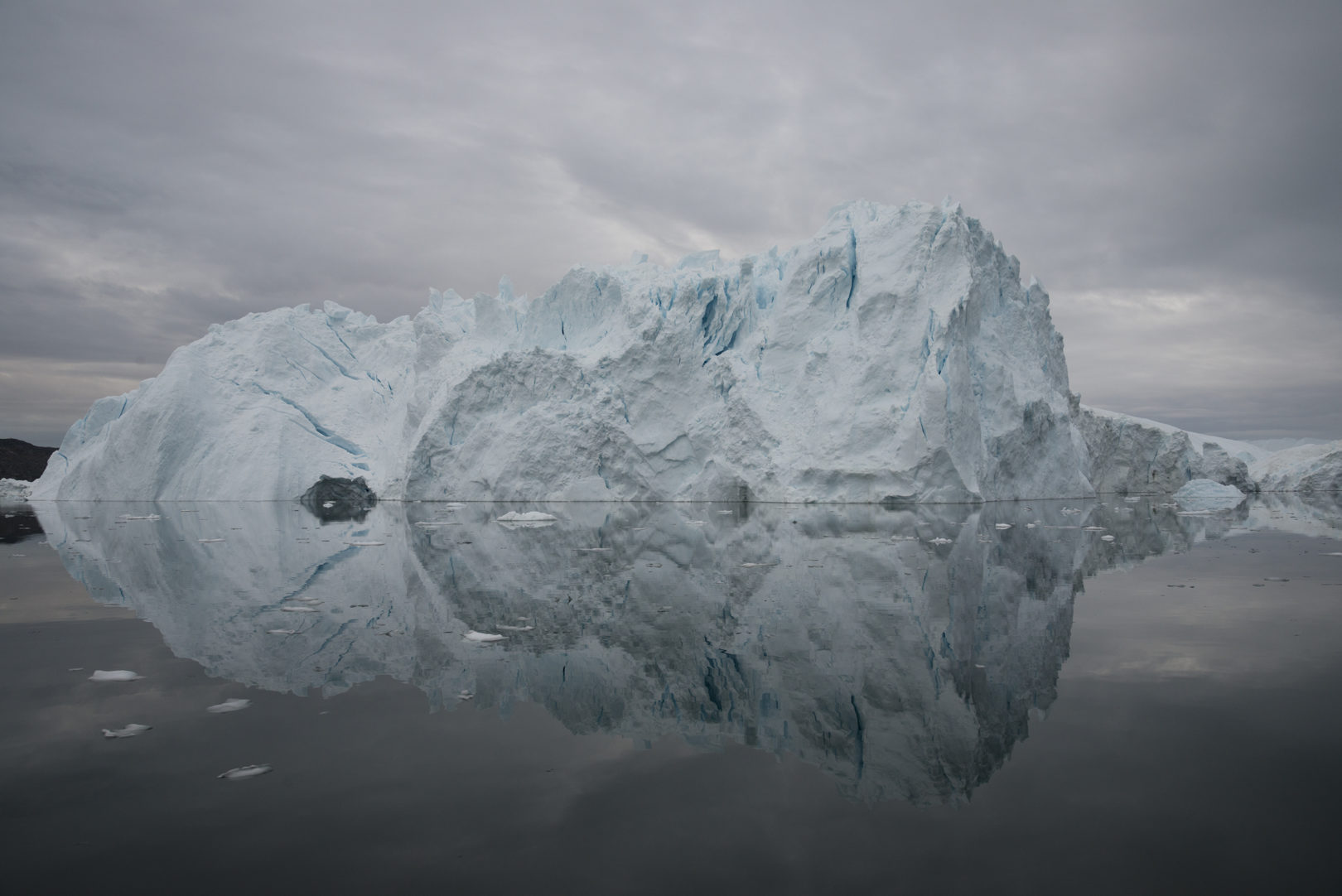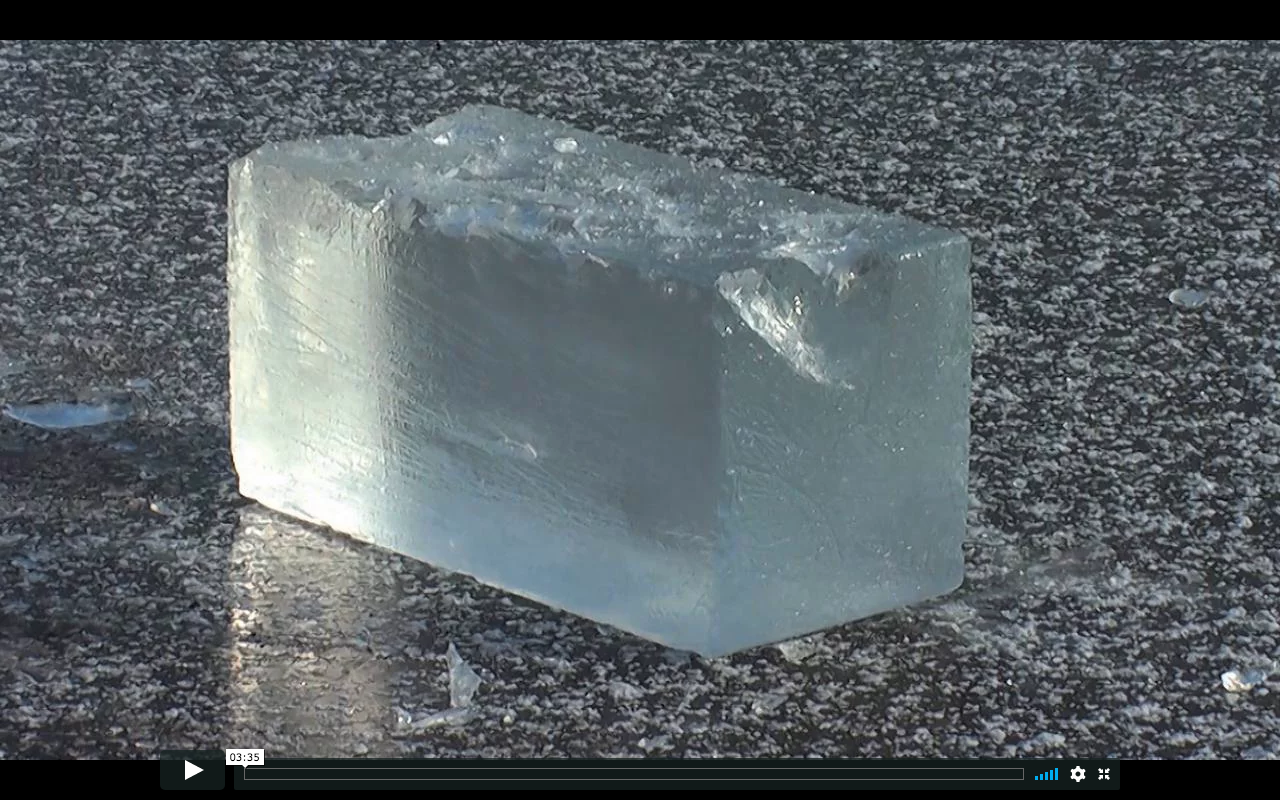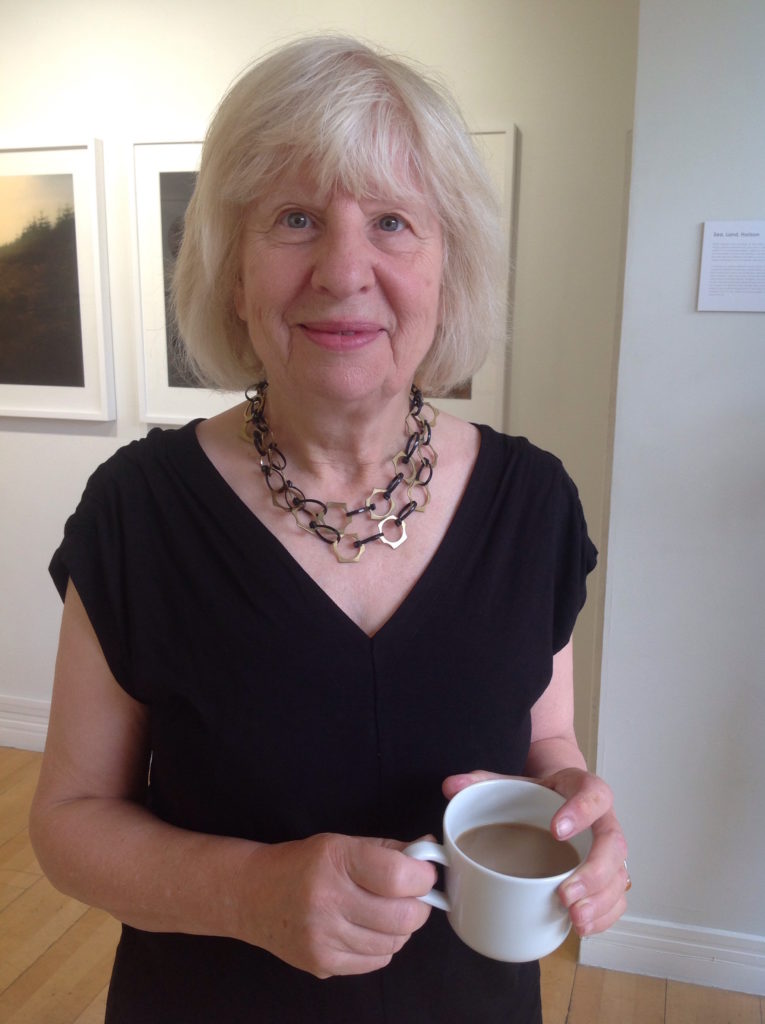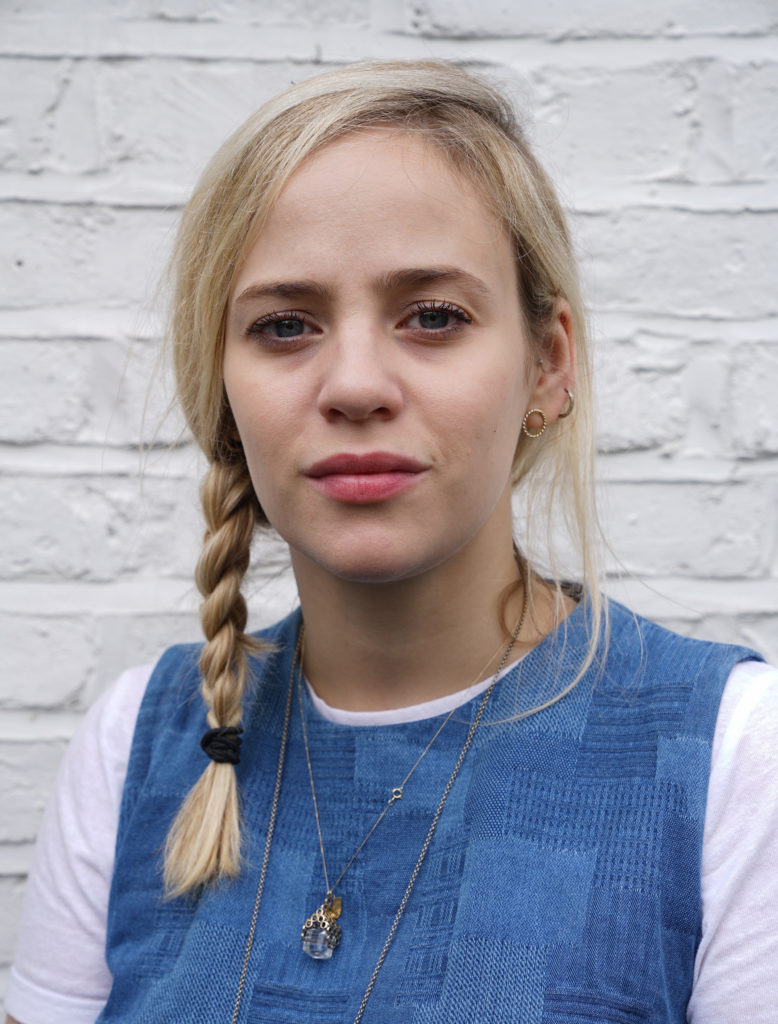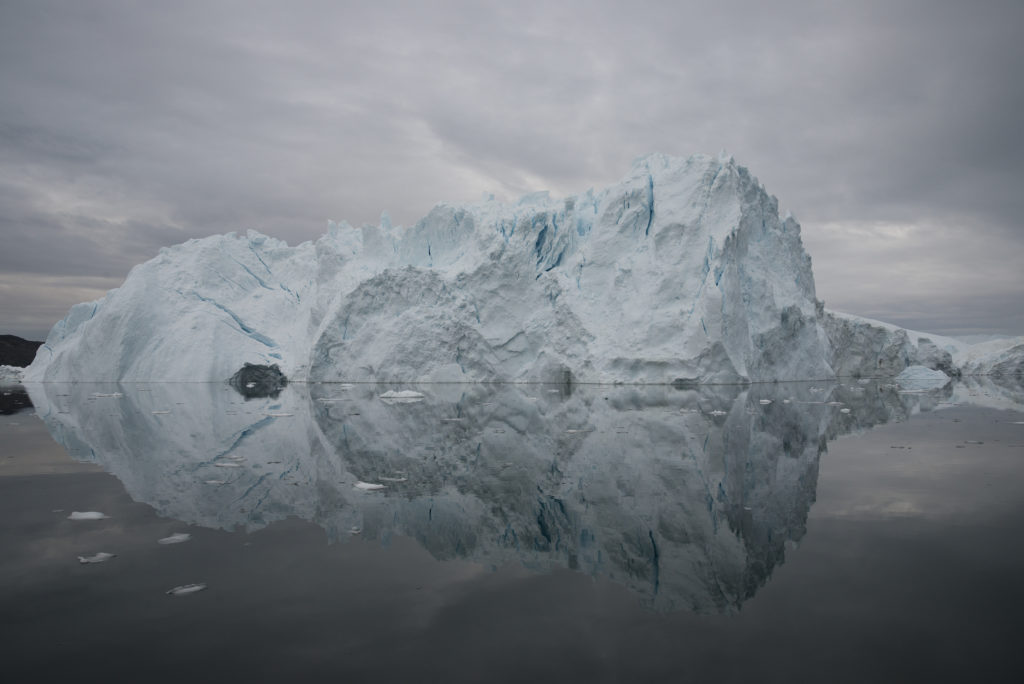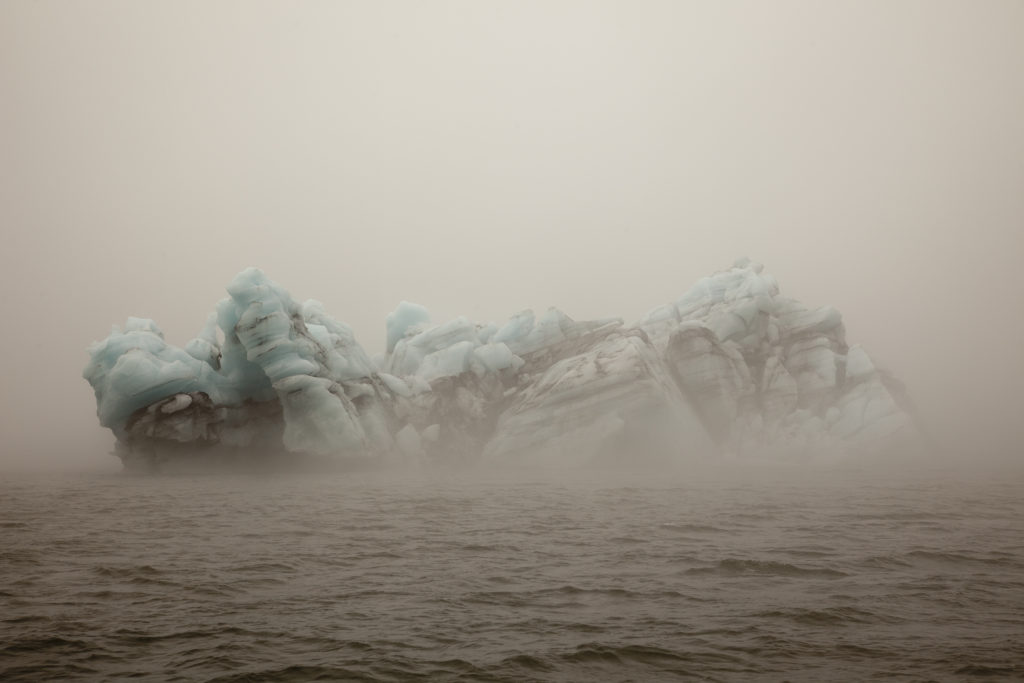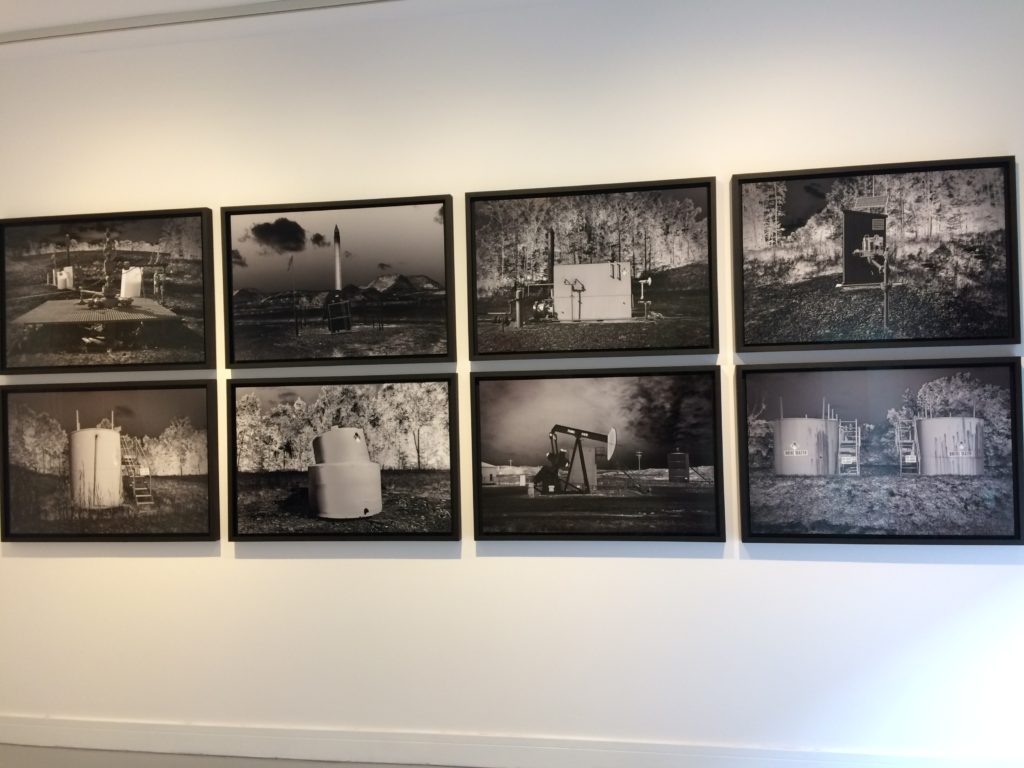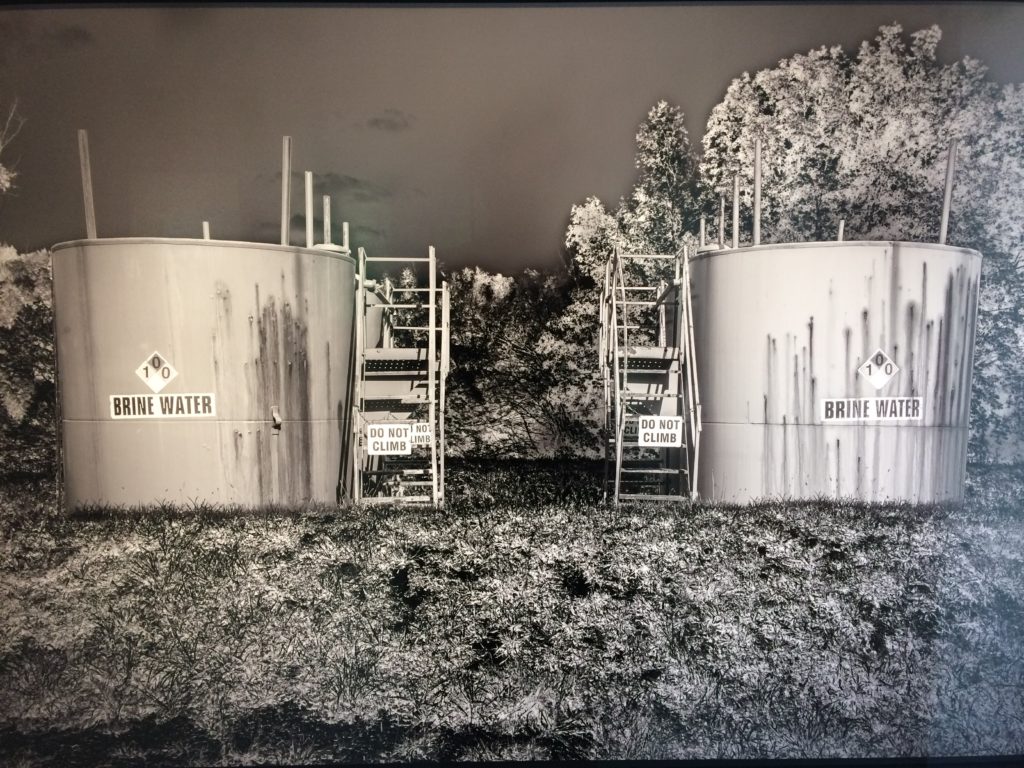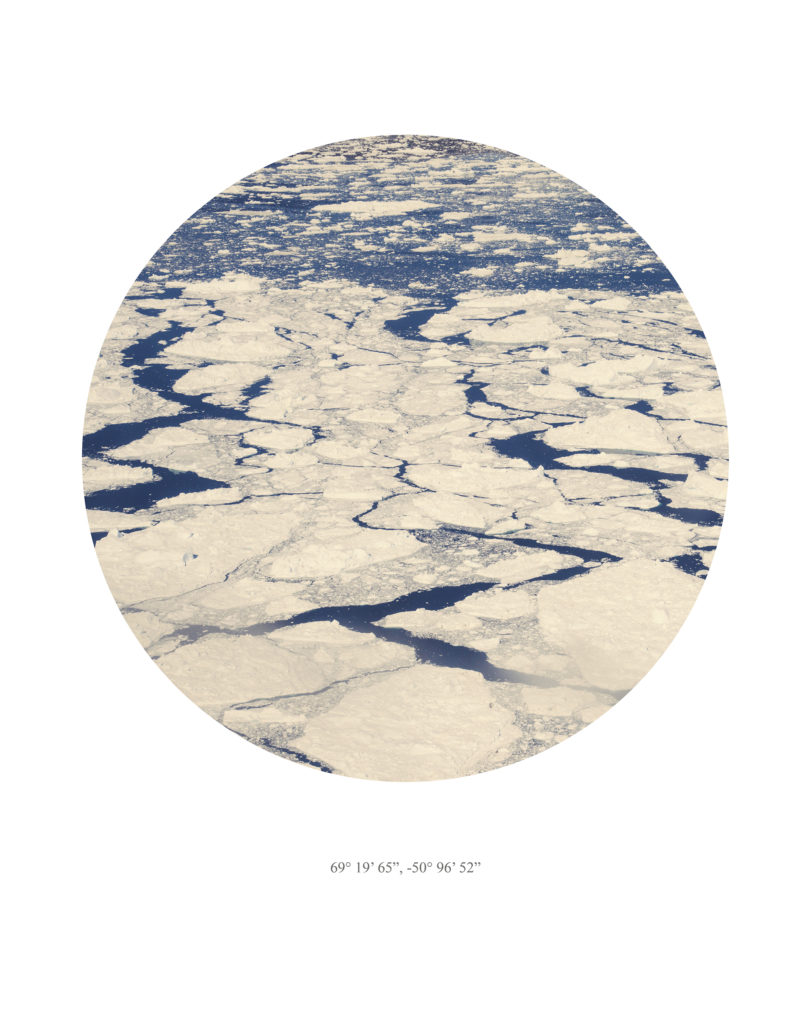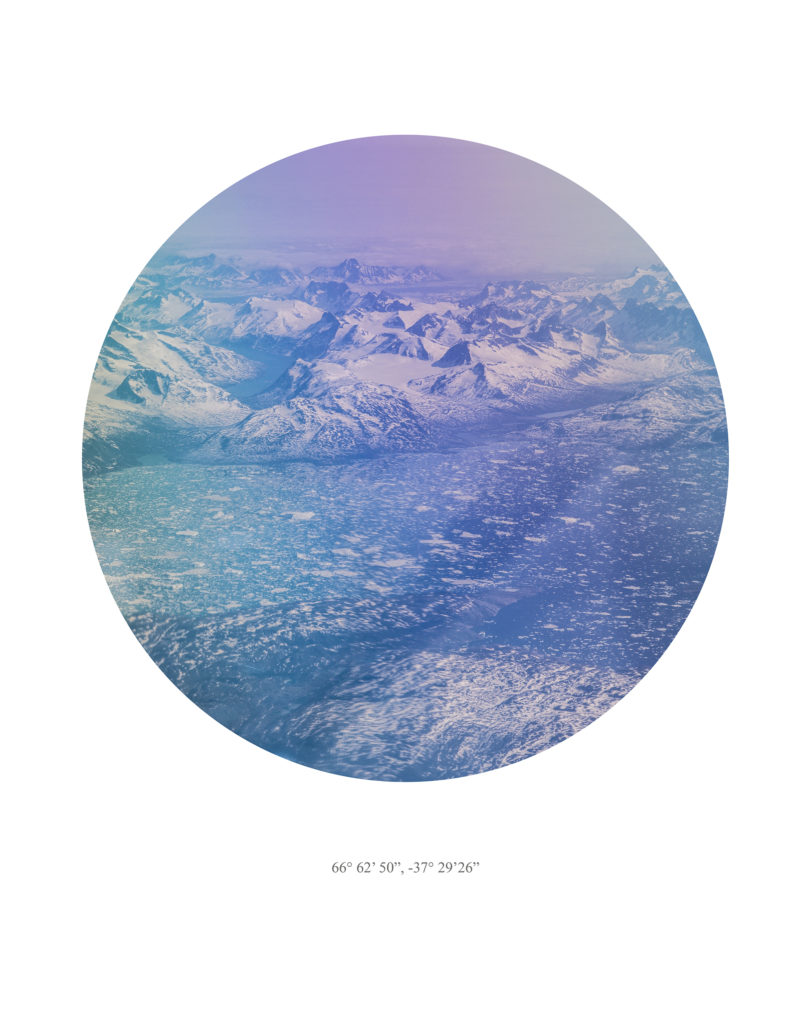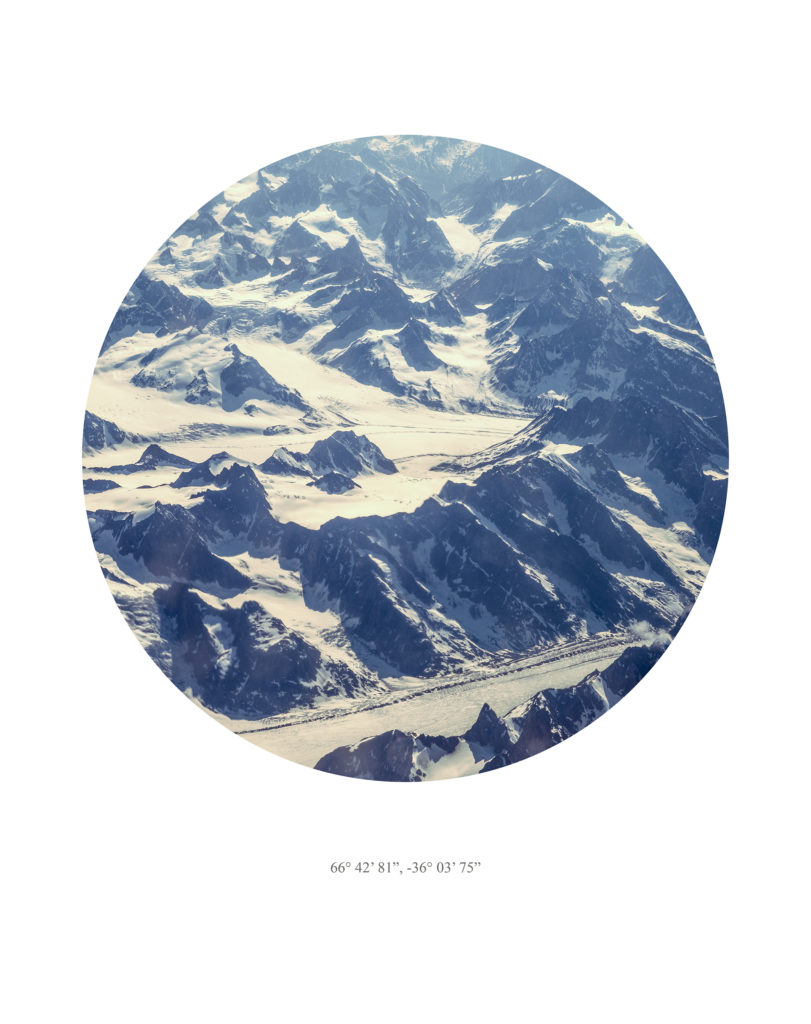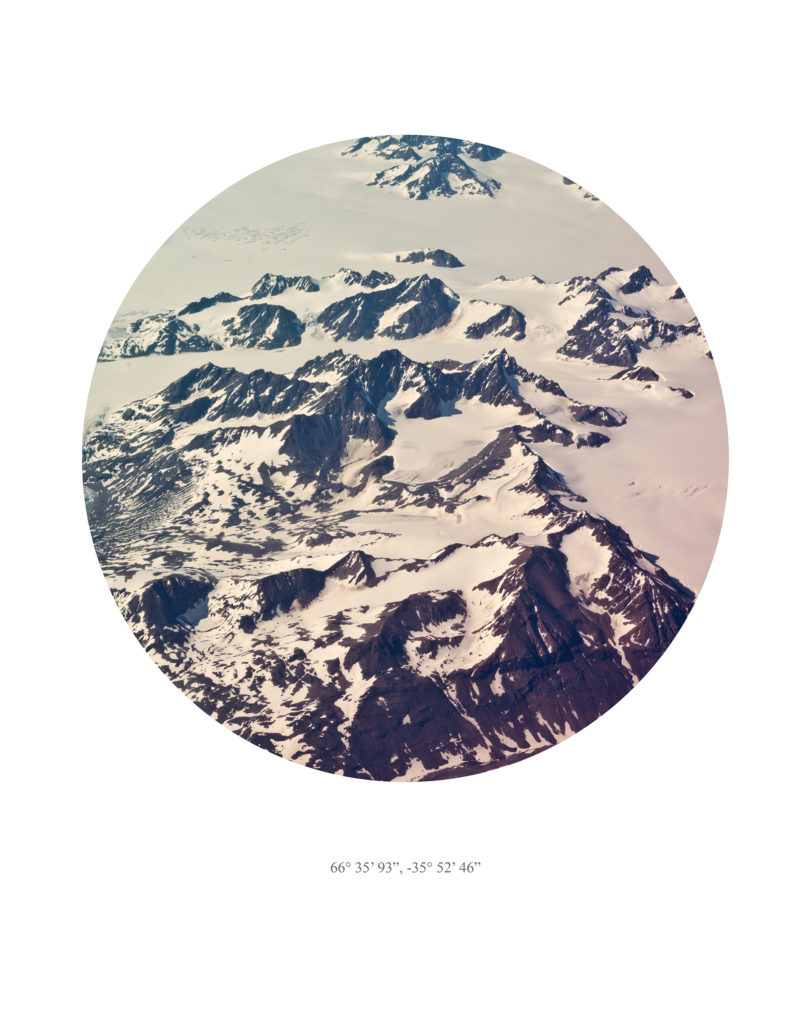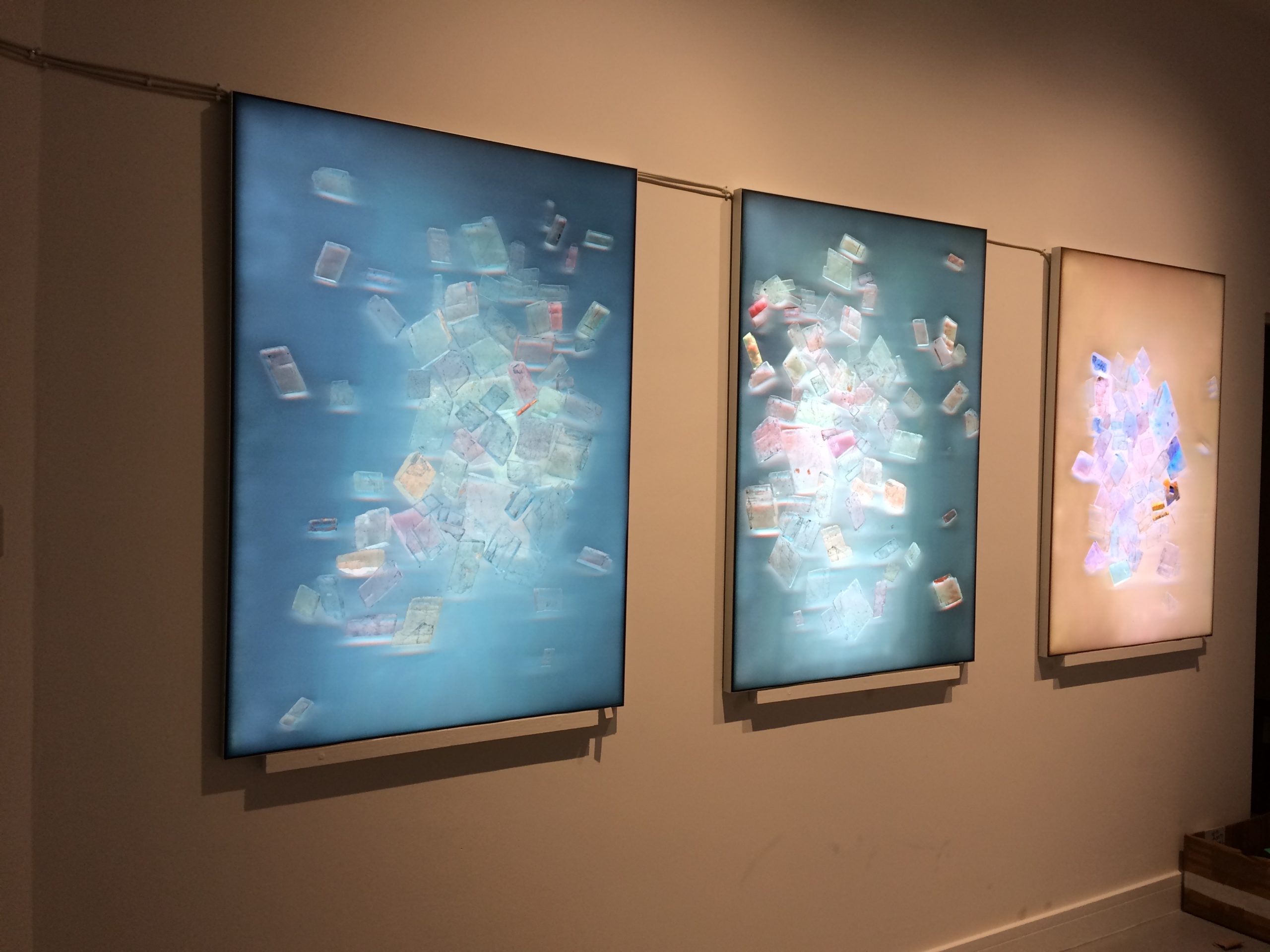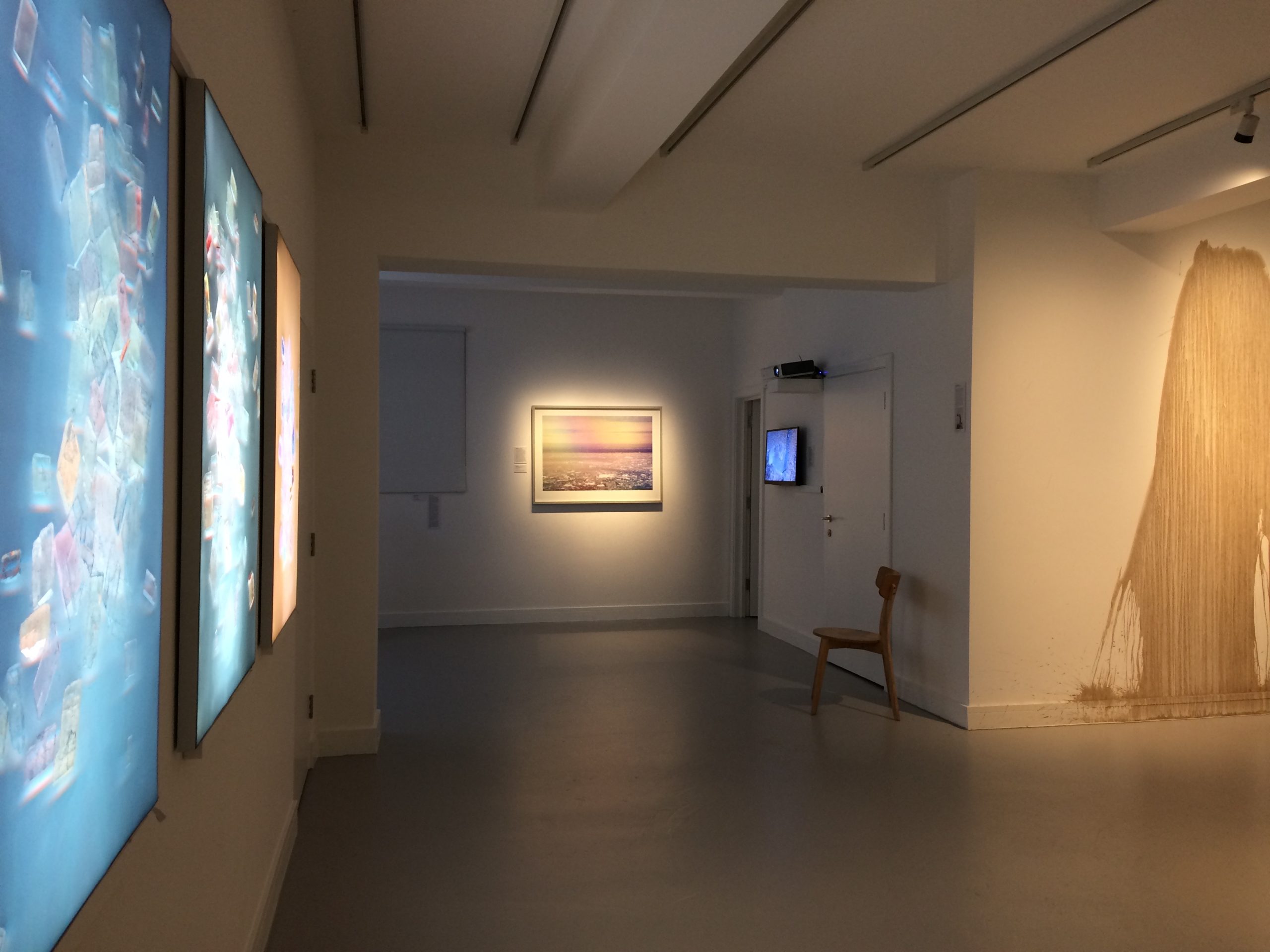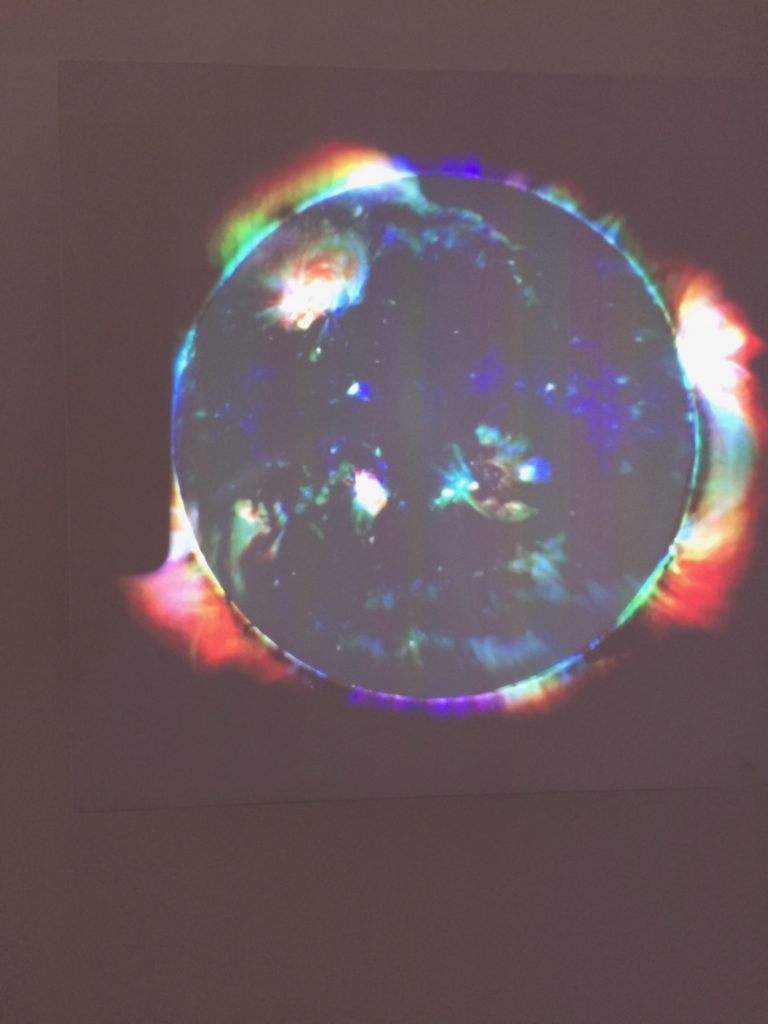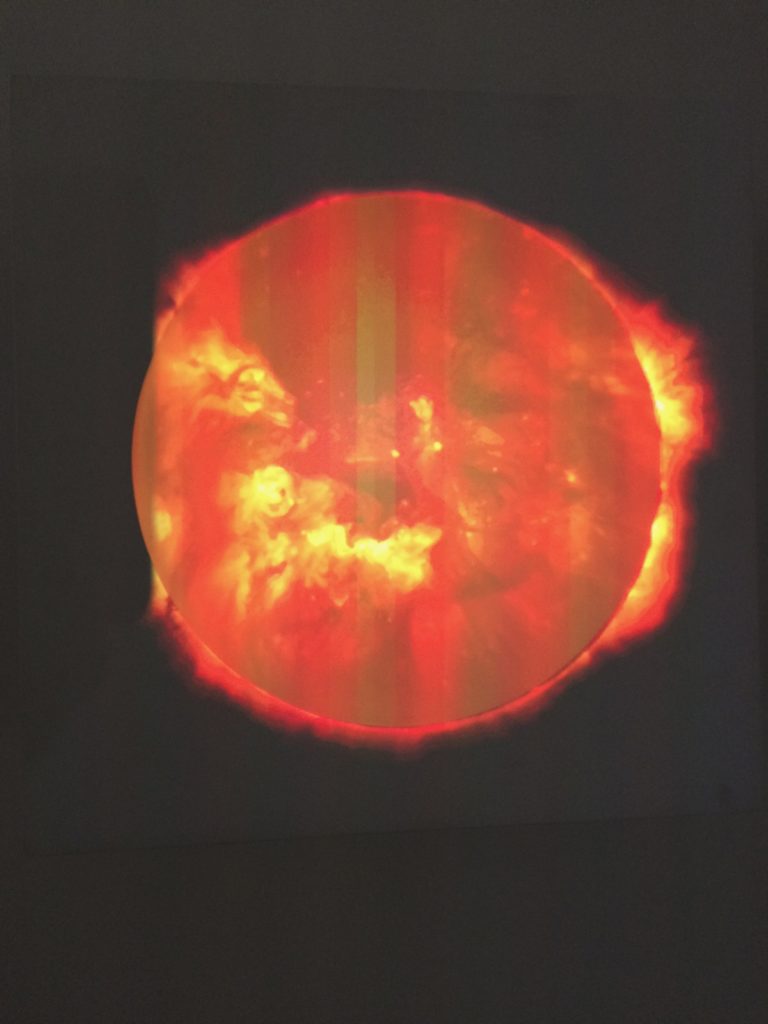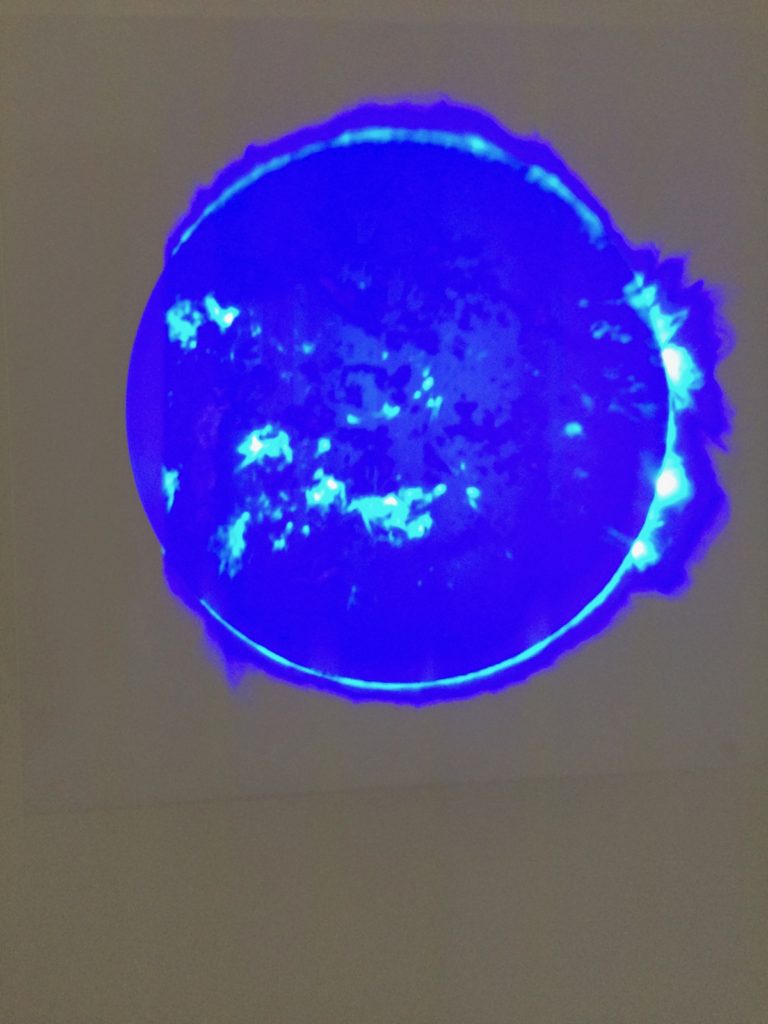Gina Glover and Jessica Rayner
14 October – 16 December 2017
Images about nature, light and power, raising questions about energy use, over use and climate change
‘Fire and Ice’ included images of industrial intrusions into wild nature, melting ice-caps, and burning biofuels. It tackled tough subjects to do with the over use of energy and the stress it is causing to the environment. But while there are tensions around the subjects, the artists visualised them through beautiful work in photography, installation, film and drawing. Gina Glover and Jessica Rayner’s work occupied the main downstairs gallery. Hilary Mayo showed her work mainly upstairs (covered in separate pages – here ). The exhibition was thought-provoking about the state of the environment. We shared ideas around climate change and energy futures between art and science communities.
Gina Glover and Jessica Rayner
Gina Glover and Jessica Rayner are artists who explore the melting, changing, landscapes of climate change. Underlying their beautiful images are the stories of the stresses to the environment caused by over demanding uses of energy. The artists who are mother and daughter, have developed complementary images in film and photography, and shared a dramatic exhibition project in 2014, The Metabolic Landscape.
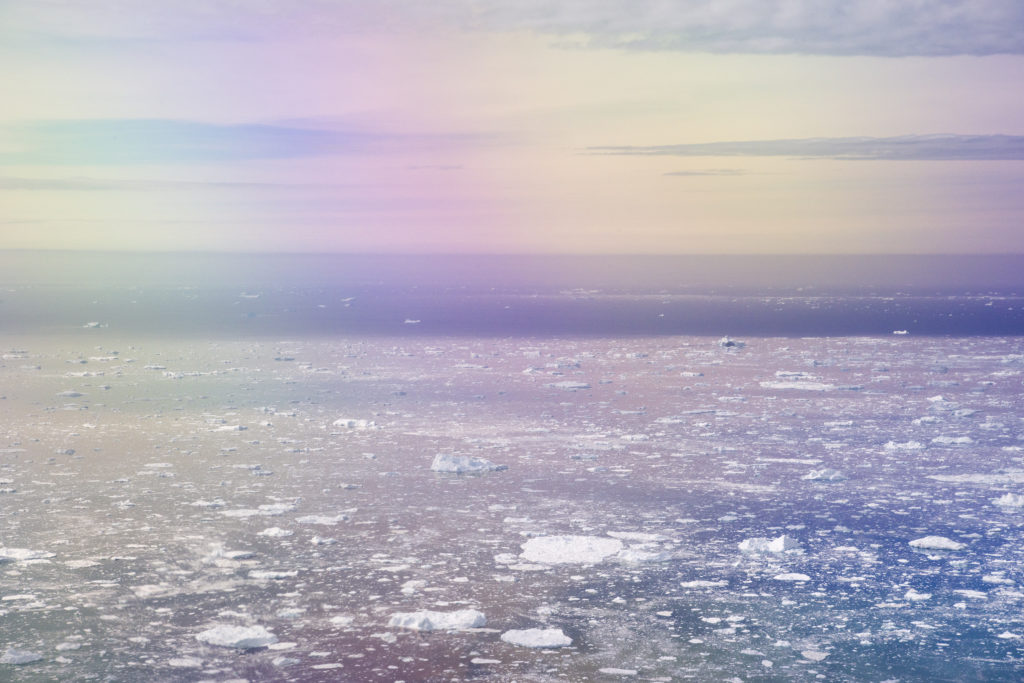
Works by Gina Glover
Gina Glover is a photographer with a long-term interest in environments affected by human conflict and economic development. She is founder of the London-based photography organisation, Photofusion, and her interests have ranged from exploration of biomedical science related imagery, to the study of environments affected by human conflict and economic development. Among the works in the exhibition, was a series about fracking sites, and another of melting ice-floes.
“I think that all of us, perhaps more so when we are children, are inquisitive or curious or react to nature through wonder. That is where our art and science comes from and that is the response that I also want to communicate through my work.
Gina Glover
The Metabolic Landscape, 2011 – 2013
Gina shot these photographs in Greenland, Spitsbergen and Iceland, where icebergs and glaciers confront us like watery monuments. They offer a distinctive aesthetic experience and a window into deep time. Some glaciers are hundreds of thousands of years old and air bubbles trapped within them reveal the chemistry of ancient atmospheres, providing the means of assessing past climatic shifts.
The glaciers present faces of solidity, dignity and power, but this belies their increasing vulnerability. Over the last century glaciers have been in retreat due to rising air, sea, and land temperatures. These vast storehouses of fresh water are melting into the sea at an increasing rate. They further raise the prospect of rising water levels overall.
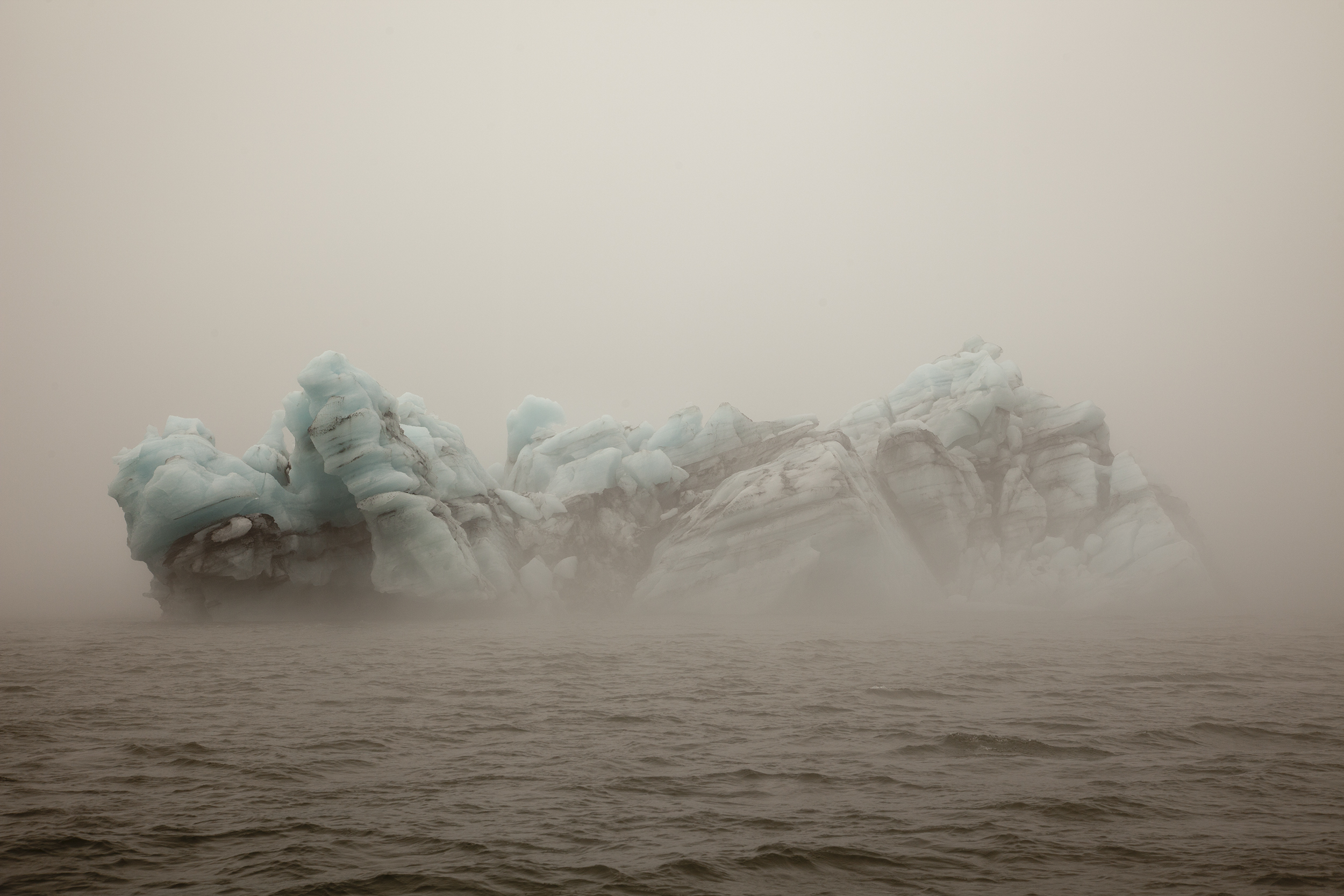
Poisoned Water Runs Deep, 2013-2017
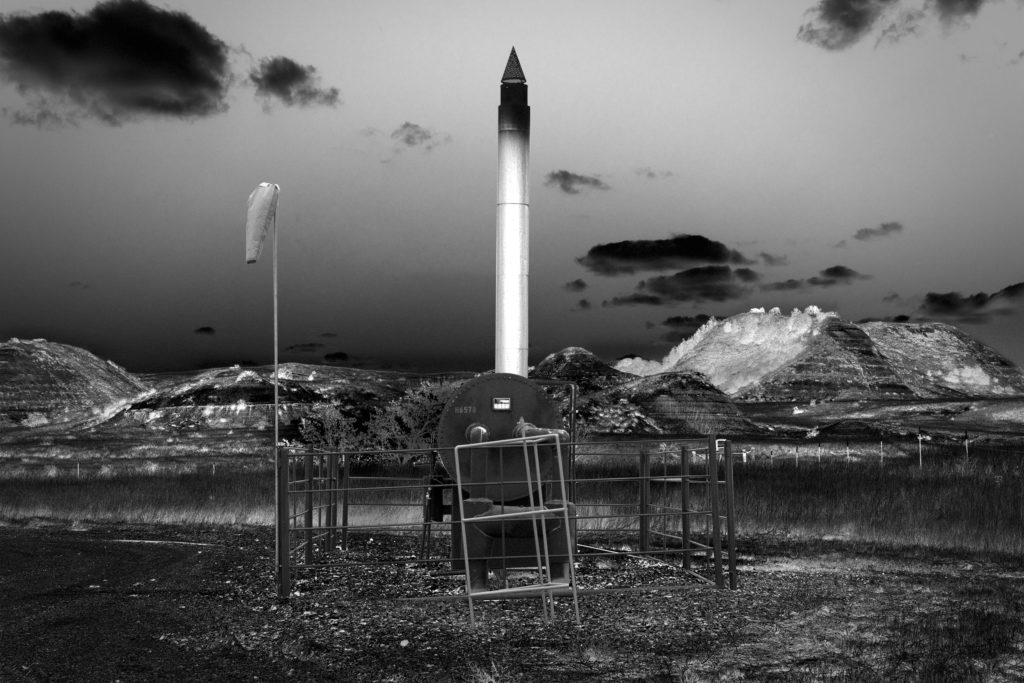
Fracking is an advanced mining process requiring pumps to direct enormous pressure to break up underlying rock formations thousands of feet below the ground, through the use of water, sand and chemicals. Gas or oil is forced into rock crevices, then it is driven to the surface. The area of well drilled is referred to as a ‘pad’, either a well pad or fracking pad.
The fracking process itself is short and after completion, drilling equipment and specialists move on to the next site. Gina’s photographs show what is left behind. We see a variety of ordinary looking equipment, water tanks, pumps and pipes, which collect gas. The gas is then is piped onward from the site to a gas compression station. Mostly these occur on farmland, in some cases right beside where cows graze, or close to habitation.’
Melt, 2013
Melt is a series of circular aerial images of the Greenland ice sheet, taken in August 2013. GPS references are displayed on each photograph. The ice sheet covers roughly 85% of the land surface of Greenland rising to an average height of 2.3 km (1.6 miles). The immense weight of the ice sheet pushes the centre of the island roughly 300 meters (1000 ft) below sea level. The icy expanse of Greenland, like the rest of the Arctic, is an important climatological indicator and performs a critical balancing role in the global climate system. Glacial melting is already an established fact. The current concern among climate scientists is that it will accelerate, to dramatic global effect. They have estimated that, were all of Greenland’s ice to melt, the world’s oceanic level would rise by as much as 7 meters (23 feet).
Jessica Rayner
Jessica Rayner’s interests range widely around the phenomena and mechanisms of light, power, perception and reflection. She uses the illusion of film, light and mirrors to make dramatic installations about sources of energy in nature. Much of her practice is based at the juncture between science and art and aims to examine notions of progress and our continual need to pursue knowledge, even as we move mundanely through our daily tasks. The artist’s assumption is that we produce unresolved questions when we look at things, and consequently, much of human inquiry in any field, is based upon inspired guesses or chance discoveries.
Works by Jessica Rayner
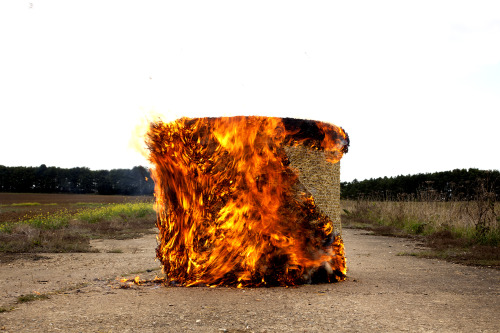
Conversion
For this video piece Rayner rolled a bale of straw to the middle of a disused concrete road surrounded by fields and lit a match. She deliberately set the bale on fire. It gradually transforms from its springy compactness into dry, dusty carbon.
Through this work, Jessica Rayner’s continues her exploration of Biomass. This is a fuel that is developed from organic materials. It is a renewable and sustainable source of energy used to create electricity or other forms of power. However, to extract energy from a substance, a process must convert it into a different state. So, the calorific energy of the bale is released through burning.
In this video we watch the bale begin to catch fire. Then, just as it gets to a point where the flames begin to take over, we are turned back in time. We return to the moments before, when the structure of the bale is intact and purposeful.
The video endlessly loops forwards and backwards making one look at what once was and what again will be.
Solsten
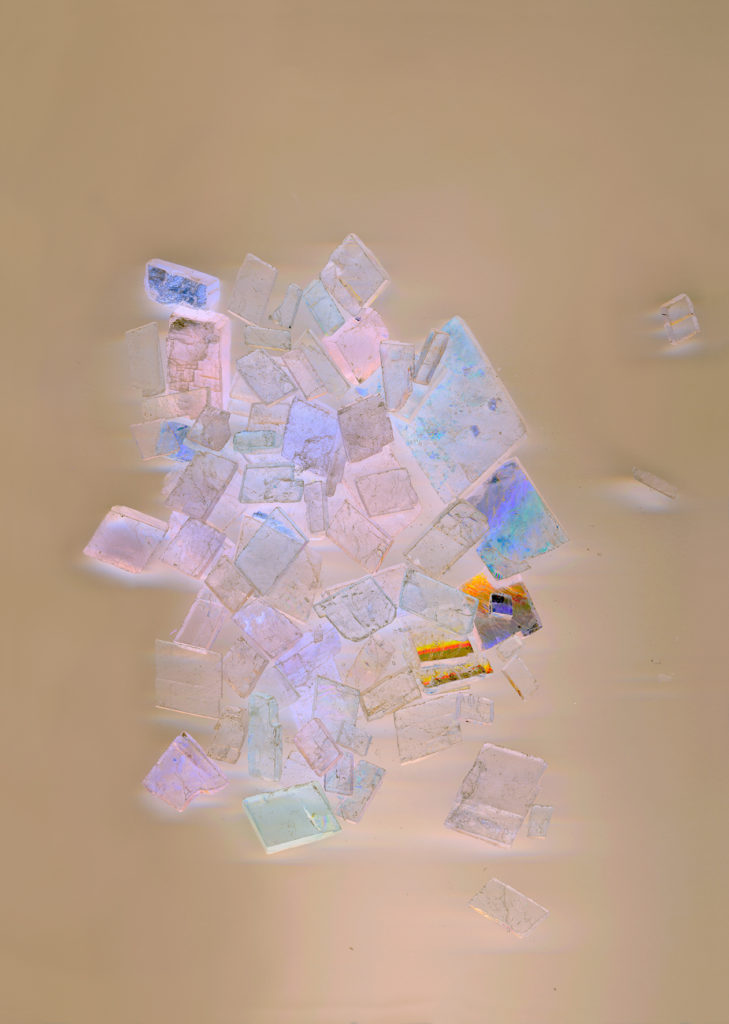
For this work Jessica Rayner examined the mineral, Icelandic Spar. Icelandic Spar has optical properties akin to polarising lenses. Recent research showed that the Vikings used it in the course of their navigation at sea, to reveal the position of the obscured sun. It enabled them to find the sun when it was hidden behind clouds. They could then judge their direction of travel, using the position of the sun as a guide.
For Jessica, this series of works encapsulates the way in which material experiments and discoveries can be used to overcome human limitations.
365 faces of the sun
In this piece, the artist amassed 365 photographs of the Sun. Many of them were from NASA, the US space agency. She ‘borrowed’ others from amateur astronomers. As each of these 365 images momentarily passes in front of our eyes, we see that they can be quite different. This perhaps says as much about the different means of recording, as the fact that the Sun never seems to wear the same face.
Momentarily looking at the Sun, or taking a photo of the sun with a standard camera, affirms to us the familiar image of a yellowish, featureless disk. Yellow is the sun’s brightest wavelength. So this is the colour we see through our brain, eye, and camera. In fact the Sun emits light in all colours. Specialised instruments, located in either ground-based or space-based telescopes, can observe colours far beyond those visible to the eye.
The sun is dynamic, complex and multi-coloured
The sun is a dynamic object formed of plasma. As there is no hard surface no photograph of the sun can ever be the same as any other. In 1898, the scientist Charles Sanders Peirce, wrote that a mental idea “can be roughly compared to a composite photograph”. Peirce was the creator of modern semiotic science and analyst of habit. He suggested that the predicate ‘yellow’, for example, refers to “a sort of composite photograph of all the yellows I have seen.” To follow Peirce, our mental image of the Sun is a sensory composite of all the images of the Sun we have ever seen.
The shifting colours of the 365 ‘faces’ of this piece, along with the Sun’s visibly changeable physical form, might provoke in us a new composite mental image of the Sun, one that is no longer plainly yellow or static, but rather dynamic, complex and multi-coloured.’
Hilary Mayo
Originally the exhibition included the work of Hilary Mayo, who like Rayner and Glover had also visited Iceland. Below is a quote from James Murray White’s review of the exhibition. You can now see Hilary Mayo’s part of the exhibition here, in its own section.
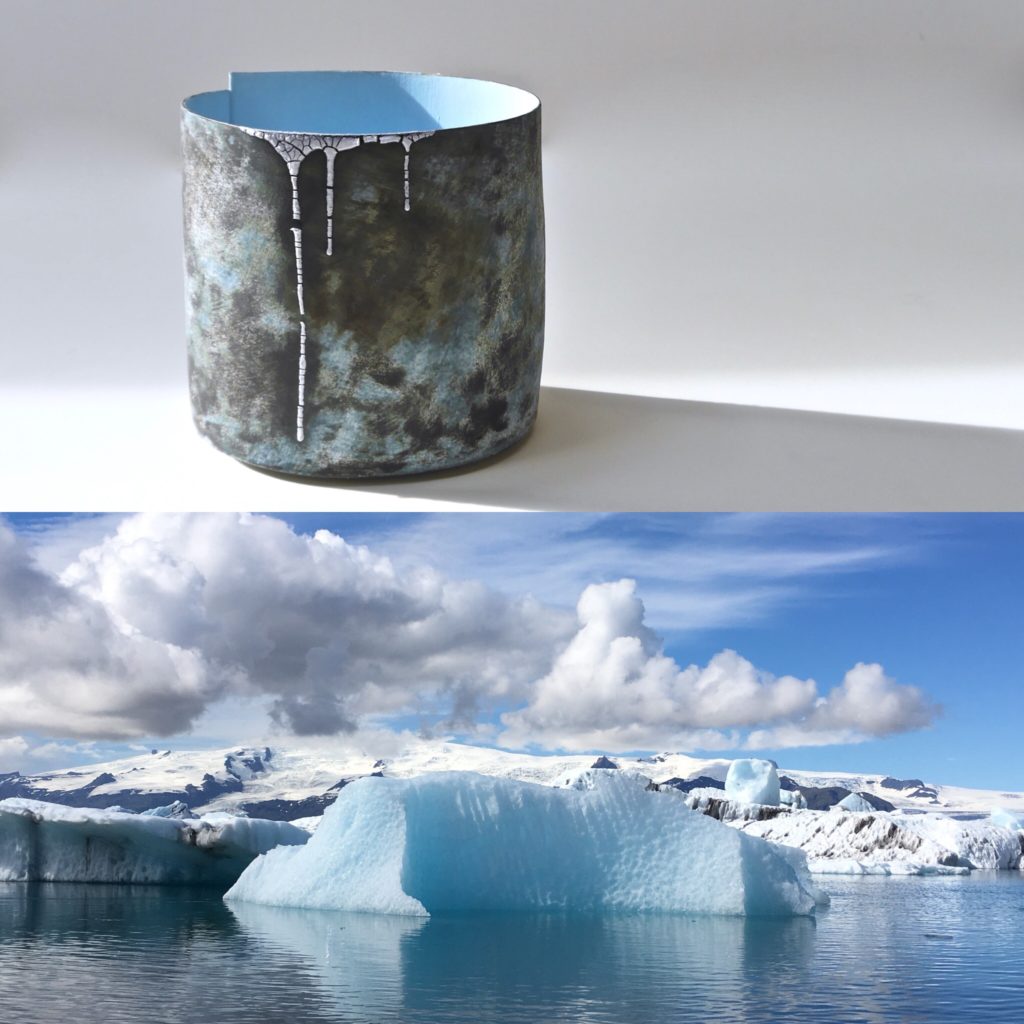
“The three artists complement each others’ practice within their unique disciplines. They have been brought together in Fire & Ice in a way that points an audience beyond the simple constraints of human understanding, to deeper connections with the base elements that underpin planetary life and consciousness. These artworks ridicule human obsessions with energy creation, and connect us to the beauty and deeper power of the raw elements of this planet. ”
James Murray-White in climatecultures.net

